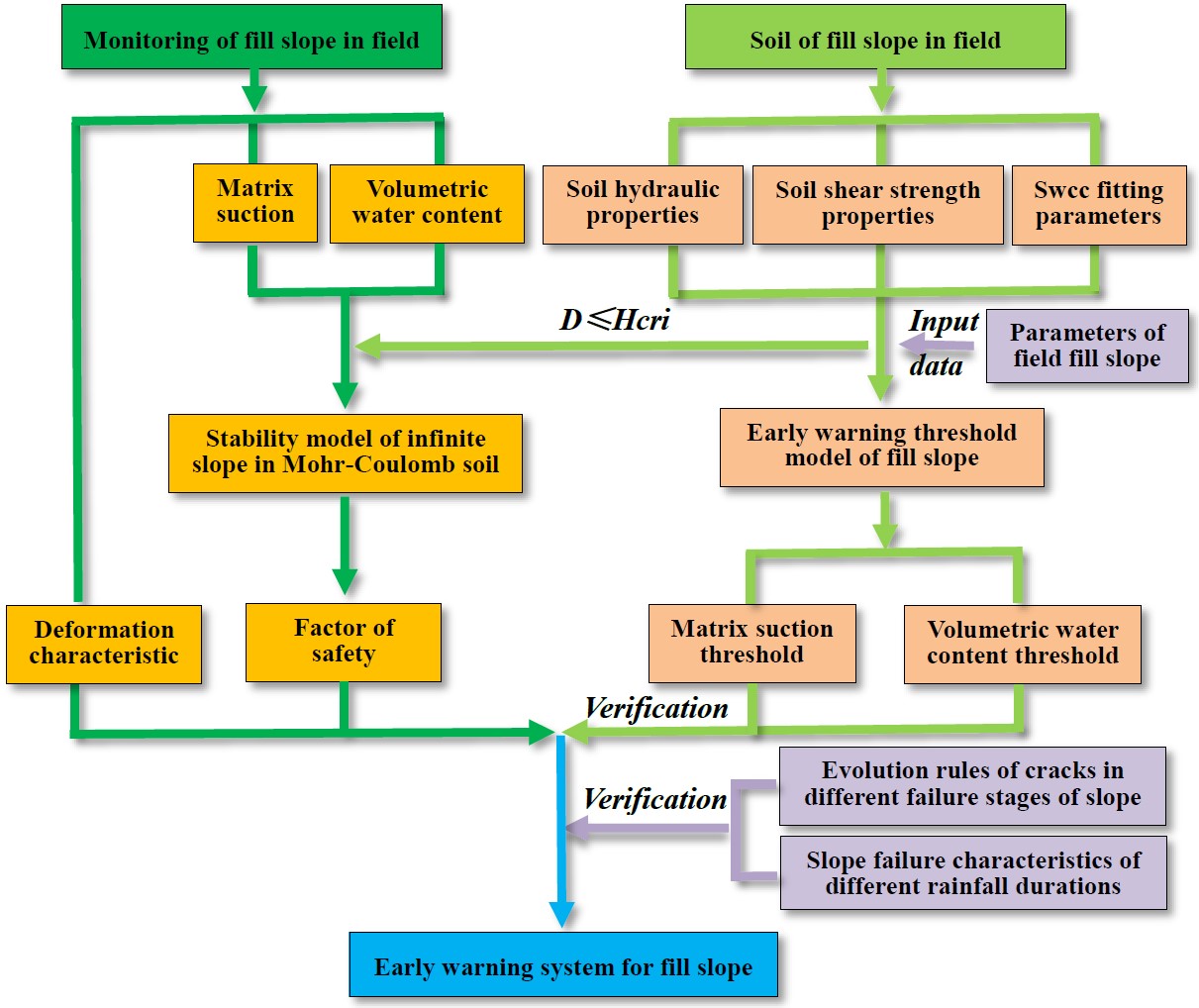Centre for Geotechnical Science and Engineering

Efficient early warning modelling for predicting landslides
Key Researchers: Shanyong Wang, John Carter, Xiangjun Pei
PROBLEM DESCRIPTION
Relocating communities to higher ground may reduce threats associated with coastal flooding, but exposes the community to other risks associated with the geomorphology of the relocation site, such as landslides due to heavy rainfall. Large-scale construction projects usually require cut-and-fill methods in mountainous regions to obtain sufficient land occupation for engineering construction. Nearly vertical and terraced loess fill slopes are generally formed. Catastrophic landslide events often occur during rainfall. Generally, at the initial stage of rainfall, the fill slope induced by rainfall infiltration mainly shows the failure mode of multi-stage block sliding and local erosion. During the increase of rainfall, the fill slope mainly demonstrates the failure mode of surface erosion and flow-slip. Such landslides could be aggravated or even triggered by extreme cyclone events. Effective hazard assessment and mitigation requires reliable tools for slope stability assessment. An efficient early warning model is urgently needed to predict the landslide of slopes due to rainfall.
The proposed early warning model not only serves as a supplement to the early warning strategy, but also greatly improves the accuracy of the early warning of fill slope failure induced by rainfall. Hydrological parameters such as volumetric water content and matric suction are used as early warning thresholds for quantitative analysis of slope stability under unsaturated conditions. These hydrological parameters can be used as a criterion for slope failure and can be evaluated by on-site real-time monitoring, which combined with slope failure characteristics in different rainfall durations and evolution rules of cracks in different failure stages of fill slope. It provides a new early warning framework for the engineers.
SCIENTIFIC AND ENGINEERING APPROACHES
- Investigate the changes in volumetric water content and matric suction during rainfall by experimental and numerical tests, and on-site real-time monitoring to predict slope failure.
- Reveal the fundamental mechanism tensile/shear cracks evolution in the slope during rainfall.
- Study the coupled effects of seepage, damage and stress on the landslides.
- Seek an efficient early warning model is urgently needed to predict the landslide of slopes due to rainfall.
APPLICATIONS
- The results of this integrated study will provide a new method for engineers who wish to predict the instability/landslides of soil slope due to rainfall in Australia and worldwide.
- Based on an extensive suite of experimental tests results, a series of charts and design recommendations will be developed, which has the potential to result in reduced slope maintenance costs.

Early warning model for predicting landslides
The University of Newcastle acknowledges the traditional custodians of the lands within our footprint areas: Awabakal, Darkinjung, Biripai, Worimi, Wonnarua, and Eora Nations. We also pay respect to the wisdom of our Elders past and present.
